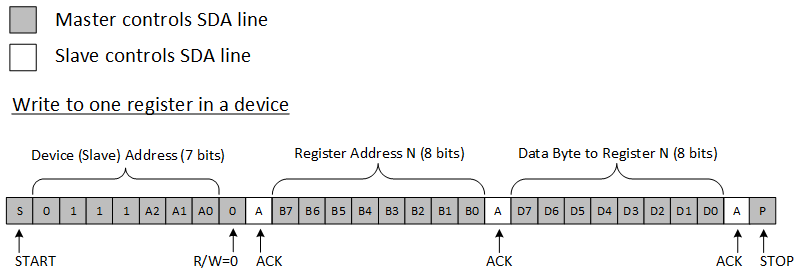ZHCSCR9C September 2014 – February 2017 TCA9534A
PRODUCTION DATA.
- 1 特性
- 2 应用
- 3 说明
- 4 修订历史记录
- 5 Pin Configuration and Functions
- 6 Specifications
- 7 Parameter Measurement Information
- 8 Detailed Description
- 9 Application and Implementation
- 10Power Supply Recommendations
- 11Layout
- 12器件和文档支持
- 13机械、封装和可订购信息
封装选项
机械数据 (封装 | 引脚)
散热焊盘机械数据 (封装 | 引脚)
- DW|16
订购信息
8.6.3.1.1 Writes
To write on the I2C bus, the master sends a START condition on the bus with the address of the slave, as well as the last bit (the R/W bit) set to 0, which signifies a write. After the slave sends the acknowledge bit, the master then sends the register address of the register to which it wishes to write. The slave acknowledges again, letting the master know it is ready. After this, the master starts sending the register data to the slave until the master has sent all the data necessary (which is sometimes only a single byte), and the master terminates the transmission with a STOP condition.
See Table 3 to see list of the internal registers and a description of each one.
Figure 28 shows an example of writing a single byte to a slave register.
 Figure 28. Write to Register
Figure 28. Write to RegisterFigure 29 shows an example of writing to the output port register.
 Figure 29. Write to Output Port Register
Figure 29. Write to Output Port RegisterFigure 30 shows an example of writing to the configuration or polarity inversion registers.
 Figure 30. Write to Configuration or Polarity Inversion Registers
Figure 30. Write to Configuration or Polarity Inversion Registers